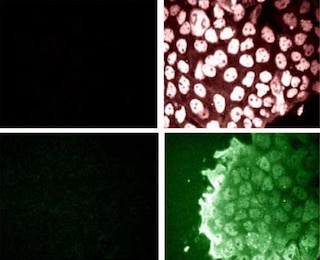-
Reagents
- Flow Cytometry Reagents
-
Western Blotting and Molecular Reagents
- Immunoassay Reagents
-
Single-Cell Multiomics Reagents
- BD® AbSeq Assay
- BD Rhapsody™ Accessory Kits
- BD® Single-Cell Multiplexing Kit
- BD Rhapsody™ Targeted mRNA Kits
- BD Rhapsody™ Whole Transcriptome Analysis (WTA) Amplification Kit
- BD Rhapsody™ TCR/BCR Profiling Assays for Human and Mouse
- BD® OMICS-Guard Sample Preservation Buffer
- BD Rhapsody™ ATAC-Seq Assays
-
Functional Assays
-
Microscopy and Imaging Reagents
-
Cell Preparation and Separation Reagents
-
Training
- Flow Cytometry Basic Training
-
Product-Based Training
- BD FACSDiscover™ S8 Cell Sorter Product Training
- Accuri C6 Plus Product-Based Training
- FACSAria Product Based Training
- FACSCanto Product-Based Training
- FACSLyric Product-Based Training
- FACSMelody Product-Based Training
- FACSymphony Product-Based Training
- HTS Product-Based Training
- LSRFortessa Product-Based Training
- Advanced Training
-
- BD® AbSeq Assay
- BD Rhapsody™ Accessory Kits
- BD® Single-Cell Multiplexing Kit
- BD Rhapsody™ Targeted mRNA Kits
- BD Rhapsody™ Whole Transcriptome Analysis (WTA) Amplification Kit
- BD Rhapsody™ TCR/BCR Profiling Assays for Human and Mouse
- BD® OMICS-Guard Sample Preservation Buffer
- BD Rhapsody™ ATAC-Seq Assays
-
- BD FACSDiscover™ S8 Cell Sorter Product Training
- Accuri C6 Plus Product-Based Training
- FACSAria Product Based Training
- FACSCanto Product-Based Training
- FACSLyric Product-Based Training
- FACSMelody Product-Based Training
- FACSymphony Product-Based Training
- HTS Product-Based Training
- LSRFortessa Product-Based Training
- United States (English)
-
Change country/language
Old Browser
This page has been recently translated and is available in French now.
Looks like you're visiting us from {countryName}.
Would you like to stay on the current country site or be switched to your country?










Immunofluorescence staining of phosphoserine (clone 19; MN 612546) on A431 cells (Human epithelial carcinoma; ATCC CRL-1555).

Immunofluorescence staining of phosphoserine/threonine (clone 22A; MN 612548) on A431 cells (Human epithelial carcinoma; ATCC CRL-1555).

Immunofluorescence staining of phosphoserine (clone 19; MN 612546) on A431 cells (Human epithelial carcinoma; ATCC CRL-1555) treated with 10 nM calyculin A and 500 nM okadaic acid.

Immunofluorescence staining of phosphoserine/threonine (clone 22A; MN 612548) on A431 cells (Human epithelial carcinoma; ATCC CRL-1555) treated with 10 nM calyculin A and 500 nM okadaic acid.


BD Transduction Laboratories™ Purified Mouse Anti-Phosphoserine/threonine

BD Transduction Laboratories™ Purified Mouse Anti-Phosphoserine/threonine

BD Transduction Laboratories™ Purified Mouse Anti-Phosphoserine/threonine

BD Transduction Laboratories™ Purified Mouse Anti-Phosphoserine/threonine

Regulatory Status Legend
Any use of products other than the permitted use without the express written authorization of Becton, Dickinson and Company is strictly prohibited.
Preparation And Storage
Recommended Assay Procedures
Western blot: Please refer to http://www.bdbiosciences.com/pharmingen/protocols/Western_Blotting.shtml
For western blotting, a dilution of 1:2500 may be a useful starting concentration for titrations.
Product Notices
- Since applications vary, each investigator should titrate the reagent to obtain optimal results.
- Please refer to www.bdbiosciences.com/us/s/resources for technical protocols.
- Caution: Sodium azide yields highly toxic hydrazoic acid under acidic conditions. Dilute azide compounds in running water before discarding to avoid accumulation of potentially explosive deposits in plumbing.
- Source of all serum proteins is from USDA inspected abattoirs located in the United States.
Companion Products

.png?imwidth=320)

Protein phosphorylation of serine and threonine residues is critical for the control of protein activity involved in various cellular events. An assortment of Ser/Thr kinases and phosphatases regulate serine and threonine phosphorylation in cell signaling pathways, such as growth factor, cytokine, chemokine, and stress response. Detection of serine and threonine phosphorylation can generally be monitored by antibodies that detect phosphoserine and phosphothreonine.
Development References (3)
-
Brivanlou AH, Darnell JE Jr. Signal transduction and the control of gene expression. Science. 2002; 295(5556):813-818. (Biology). View Reference
-
Pawson T, Scott JD. Signaling through scaffold, anchoring, and adaptor proteins. Science. 1997; 278(5346):2075-2080. (Biology). View Reference
-
Yan JX, Packer NH, Gooley AA, Williams KL. Protein phosphorylation: technologies for the identification of phosphoamino acids. J Chromatogr A. 1998; 808(1-2):23-41. (Biology). View Reference
Please refer to Support Documents for Quality Certificates
Global - Refer to manufacturer's instructions for use and related User Manuals and Technical data sheets before using this products as described
Comparisons, where applicable, are made against older BD Technology, manual methods or are general performance claims. Comparisons are not made against non-BD technologies, unless otherwise noted.
For Research Use Only. Not for use in diagnostic or therapeutic procedures.
Report a Site Issue
This form is intended to help us improve our website experience. For other support, please visit our Contact Us page.